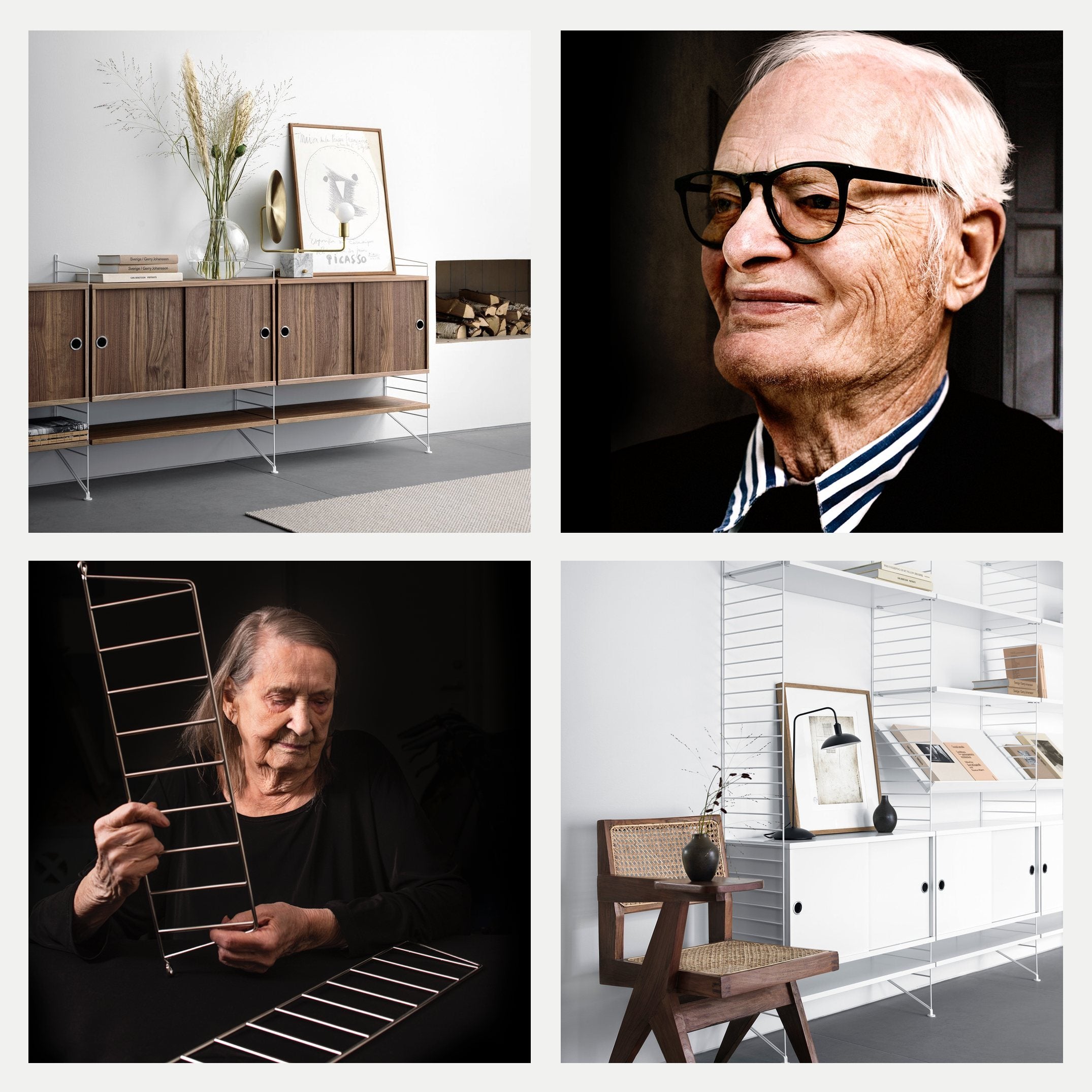
Nils Strinning
The design couple behind String® - a shelf that can be endlessly reinvented
Nisse Strinning was an architect and an inventor. He had an eye for spotting people’s needs and the imagination to find solutions to their problems. The hassles of everyday life that went unnoticed by other designers were captivating challenges for Nisse. He was also impatient. Few of his projects would have been realised without his partner and wife Kajsa. She ensured the ideas were deeply explored, refined and documented in construction drawings. Her role was by no means less important than her husband’s. Through their career the Strinnings designed things that made life easier, less messy and more practical, including plate racks, wire trays, and trash bag holders. Their belief that form should always follow function explains why many of their creations are considered iconic today.
In 1949 the Bonnier publishing company and their popular Bonnier Folk Library series announced a competition to design a bookshelf, the embryo of String® was already beginning to form in Nisse Strinning’s mind. The competition rules stated that the new bookshelf should be affordable and easy to ship and assemble. Clearly the publishing company wanted something that would be suitable in most Swedish homes. The competition provided a creative incentive for Kajsa and Nisse. Before entering the contest, they fine-tuned their shelf to meet not only the jury’s standards, but also their own, which were even tougher. The String® shelf won, and became an instant success. In parallel, the Strinnings continued to develop the idea, and soon String® was a complete system with an array of functional elements and accessories. More than 70 years later, String® remains one of Sweden’s biggest selling and most loved designs, as well as being internationally acclaimed.
Following a period when String® was out of production, the Strinnings sold the manufacturing rights to newly started String Furniture. String® System was put in production again, and its development continued. Today the system consists of more pieces than ever.
 |
 |




































































